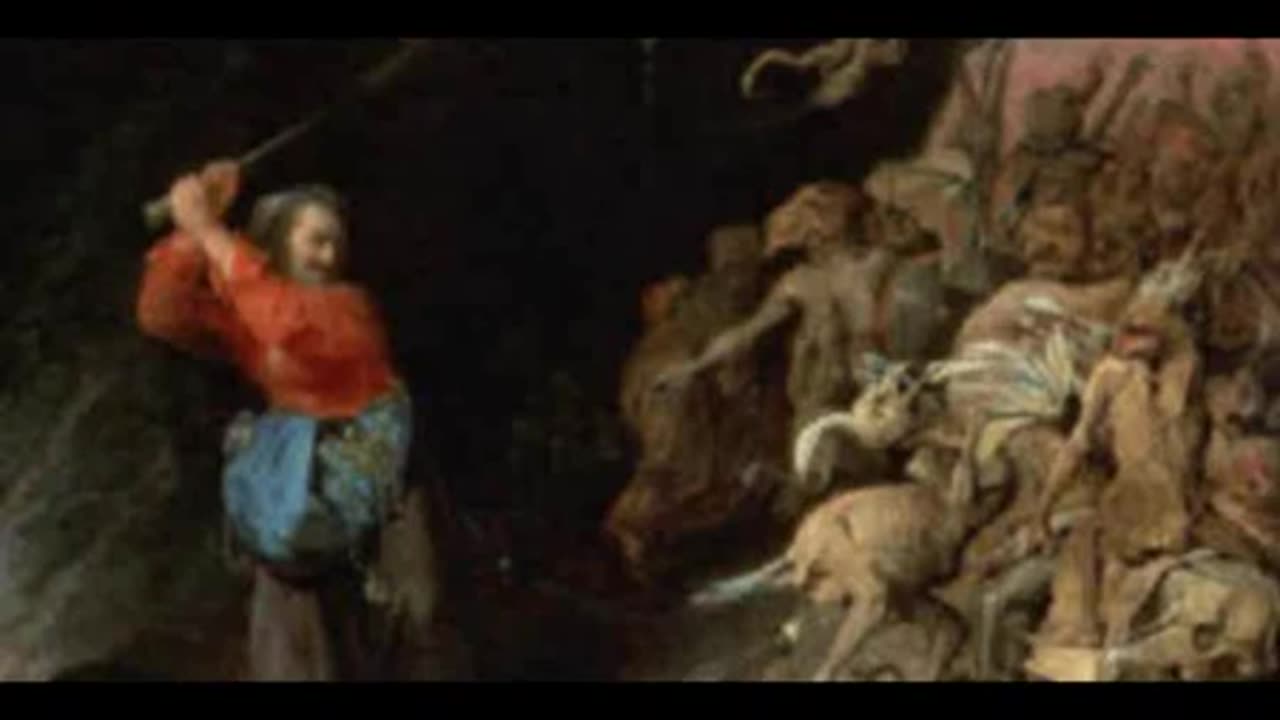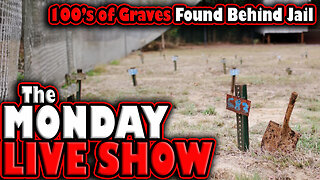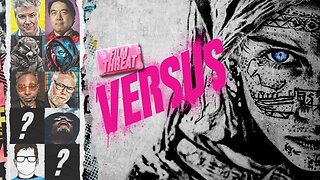Premium Only Content

Benandanti
https://solitarypaganism.com/folk-magick/benandanti/
Participants in the lingering remnants of an ancient agrarian cult in northern Italy, which came to the attention of the Inquisition in the late 16th century because of the cult’s nocturnal battles with witches and warlocks over the fertility of the crops and livestock.
The term benandanti means “good walkers.” The cult flourished in the Friuli region of Italy, an isolated area where Italian, German and Slavic traditions met and mingled.
The benandanti were comprised of men and women born of the caul, that is, with the inner fetal membrane still covering the body, especially the head.
This was a sign not only of the benandanti but of supernatural powers of healing the bewitched and the power to see witches.
Some benandanti saved their cauls and wore them about their necks as amulets or talismans.
The benandanti were compelled to serve their villages during the Ember Days, the changing of the seasons marked by the solstices and equinoxes.
At midnight, usually on Thursday but sometimes on Friday or Saturday of the Ember Days, they were summoned, sometimes by drums or, tradition has it, by angels.
If they did not respond promptly and were late, they were severely beaten.
They left their bodies, and their spirits assumed the shapes of butterflies, mice, cats and hares.
They went to the valley of Josaphat in the center of the world, where they met the army of witches and warlocks, also in spirit guises.
The benandanti would be armed with stalks of fennel, renowned for its healing properties; the witches would be armed with sorghum stalks, a type of millet perhaps identified with brooms.
For an hour or several hours, the opposing spirit armies engaged in battle, beating each other with their stalks.
If the benandanti won, the year’s crops would be abundant.
If the witches won, storms would plague the growing and harvesting seasons, and famine would ensue.
After the “games,” as the battles were called, the benandanti and the witches passed by houses looking for clean water to drink.
If they found none, the witches entered the cellars and either overturned the wine casks, or drank the wine and urinated in the casks.
The spirits had to return to their bodies by cock’s crow.
If they did not, or if their bodies had been turned over onto their stomachs while their spirits were gone, they either had great difficulty re-entering them, or could not get back in at all.
The spirits then were forced to wander the earth until their bodies’ destined time of death arrived.
The origins of the benandanti cult are unknown; the roots are probably ancient.
The leaving of the body and doing battle in spirit, in the guise of animals, is shamanic in nature.
The benandanti may be an offshoot of the cult of Diana, which was known in Italy from the end of the 14th century.
Followers of Diana held peaceful sabbats at night and were not associated with diabolical rites until later by the church.
The rites of the benandanti had no similarities to the celebrated witches’ sabbat but were entirely agricultural in intent, and were emotionally intense.
The benandanti considered themselves soldiers of the good fight, preserving their crops and protecting their villages from the evildoing of witches.
The cult persisted in spite of the magical/holy measures provided by the church to protect crops, such as the sprinkling of holy water over the fields, the erection of a cross and the processions and prayers on Rogation Days.
Apparently, the benandanti believed their ways were more effective.
Though pagan, the cult had acquired Christian elements by the late 16th century.
The benandanti went out in the service of Christ and God, to battle the agents of the Devil.
The benandanti came to the attention of the church in 1575, when a priest in Brazzano heard rumors of a man in Civdale, Paolo Gasparutto, who could cure bewitched persons and who “roamed about at night with witches and goblins.”
Summoned and questioned by the priest, Gasparutto admitted the Ember Days’ outings, adding that in addition to fighting, there was leaping about, dancing and riding on animals.
To the priest, this sounded ominously like a witches’ sabbat, and he involved the inquisitors.
Various interrogations and trials of benandanti were conducted in the region from 1575 to 1644.
The churchinquisitors made efforts to associate the benandanti with witches and to get them to confess that they participated in witches’ sabbats (said to occur every Thursday night, not just during the Ember Days), and were forced to abjure Christ and gave their souls to the Devil.
With few exceptions, the benandanti staunchly deflected these efforts.
They also insisted that being benandanti did not at all interfere with their regular churchgoing and Christian prayers.
They said they were forced to go out inservice because they had been born with the caul.
They were initiated at maturity, and after some 10 or 20 years in service, were relieved of their obligations.
While some benandanti claimed to go out during each of the Embers Days, others said they went out only once every few years.
Still others said they were called out whenever witches “did evil.”
Some said they knew who were other benandanti and who were witches, while others said they did not know anyone but recognized the spirit forms as one side or the other.
Most protested that they could not reveal names or even details about the battles, lest they be severely beaten in punishment.
The inquisitors, however, often succeeded in eliciting names of members of both factions.
One aspect of the benandanti’s nocturnal travels that puzzled inquisitors the most was the leaving behind of the body.
By the late 16th century, inquisitors and demonologists were beginning to question the actuality of the witches’ sabbat, contending instead that it was all hallucinatory.
But the benandanti insisted that their spirit battles were very real; that they did leave the body and travel in spirit, and could assume the shapes of animals.
They did not feel pain in the fighting, they said.
Some said they left the body after rubbing on an ointment or oil, while others fell into a faint that resembled a cataleptic state.
Beyond that, the peasants were at a loss to explain. One description of the spirit travel to the valley of Josaphat, offered in 1591 by Menechino della Nota as a dream in order to dodge the inquisitors, is described in Night Battles by Carlo Ginzburg:
“I had the impression there were many of us together as though in a haze but we did not know one another, and it felt as if we moved through the air like smoke and that we crossed over the water like smoke,everyone returned home as smoke”
No inquisitors could accept that the soul could leave the body while it was living and return.
That the benandanti took the shapes of animals led the inquisitors to believe that they were physically led off on animals, and they tried to ascertain that the Devil did the leading.
Until the Inquisition, little had been known about the secretive benandanti, even in their own villages.
Some who were known for their healing and spell-breaking abilities were sought out.
The public attention, plus the persistent efforts of the church to ally the benandanti with witches, eventually did lead to increasing association of the benandanti with witches.
By 1623 the church had obtained confessions from benandanti that they participated in witches’ sabbats.
This led to more damning confessions of Devil’s pacts, desecration of the cross, vampirism and abjuration of the Christian faith.
What had once been a purely agricultural rite became transformed into a rite of Devil worship.
Despite its success, the church put little effort into prosecuting the benandanti.
Many trials were never concluded, and torture was not used.
Punishment, when meted out, was mild—prison sentences or banishment.
The benandanti apparently came to light when skepticism about witches was gaining ground in parts of Europe.
The last major benandanti trial took place in 1644.
A few scattered inquisitional efforts occurred into the late 1600s, but trials were abandoned.
-
 9:21
9:21
asolitarypagan.com
1 year agoMaking Herbal Salves
1.73K -
 LIVE
LIVE
Exploring With Nug
5 hours agoHunderds Of Graves Discovered Behind Mississippi Jail! Community Outraged!
369 watching -
 1:01:50
1:01:50
The Tom Renz Show
6 hours ago"RFK, MAHA, the DOJ & DC Rats... It's Go Time For Freedom Fighters"
6.02K -
 19:30
19:30
Josh Pate's College Football Show
3 hours ago $2.14 earnedUGA Beats Tennessee - Josh Pate Rapid Reaction
25.3K -
 42:58
42:58
Uncommon Sense In Current Times
6 hours ago $0.94 earned"The World Health Organization only wants to work with Nations that are compliant!"
17.9K3 -
 40:48
40:48
Athlete & Artist Show
2 days agoTyson vs Paul, Gavin Mckenna to the NCAA?
63.2K4 -
 1:38:01
1:38:01
The Quartering
6 hours agoNFL BANS Trump Dance, Huge FCC Appointment, Kamala Team Leaks Brutal Details!
122K85 -
 2:10:32
2:10:32
Film Threat
9 hours agoVERSUS: DUNE: PROPHECY PREMIERES | Film Threat Versus
21.3K1 -
 13:24
13:24
Rethinking the Dollar
20 hours agoExecutive Orders That Could Change Money Forever
21.2K11 -
 49:12
49:12
Ben Shapiro
6 hours agoEp. 2087 - Here Comes The BOOM: Trump Exploding Status Quo
95.3K88